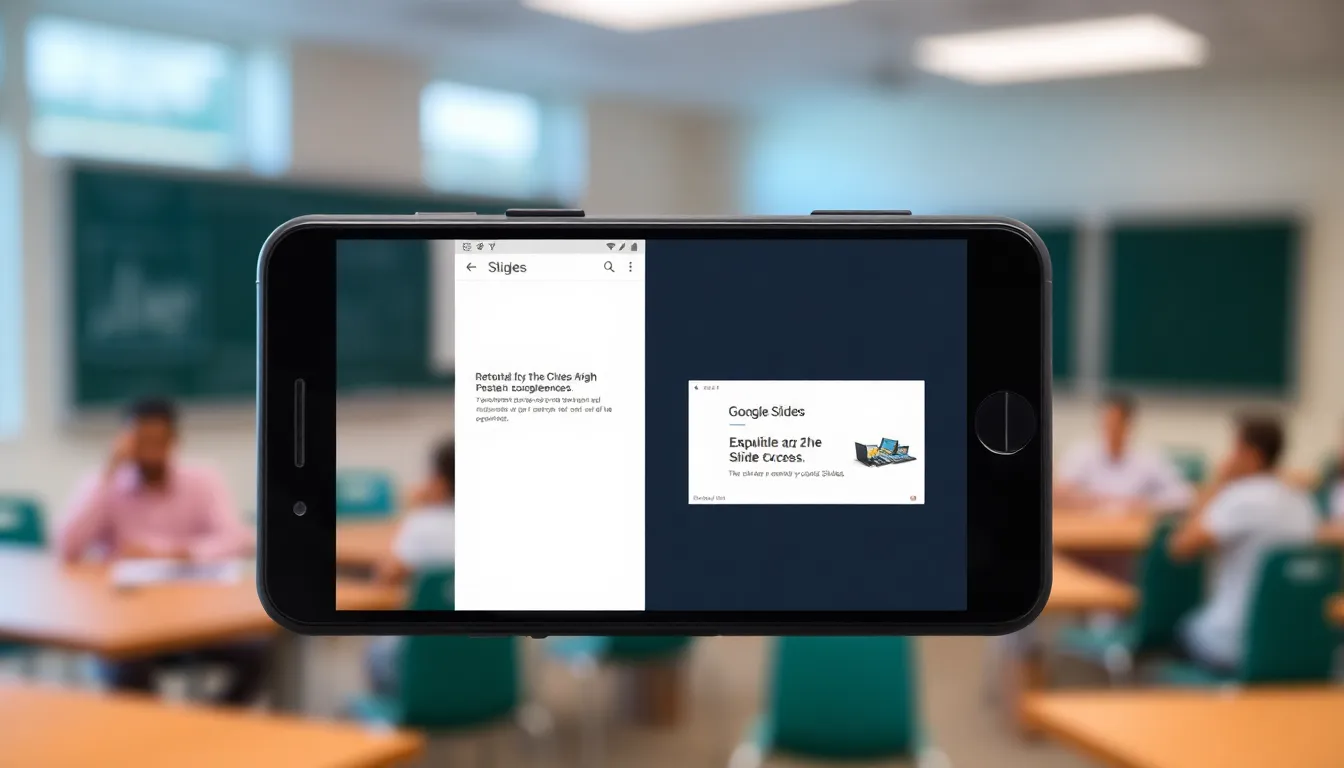In a world where visuals reign supreme, turning your Google Slides into images on an iPhone can feel like finding a unicorn in a haystack. But fear not! Whether you’re prepping for a presentation or just want to share those stunning slides with friends, saving them as images is easier than you think.
Table of Contents
ToggleUnderstanding Google Slides
Google Slides serves as a robust platform for creating and sharing presentations. This cloud-based application enables users to design slideshows collaboratively from any device connected to the internet.
What Are Google Slides?
Google Slides functions as an online presentation tool. Users can create, edit, and share slides, fostering collaboration in real-time. Accessing Google Slides requires a Google account, which unlocks features like templates, transitions, and multimedia support. Mobile devices can easily access Google Slides, allowing for on-the-go presentation management.
Benefits of Using Google Slides
Using Google Slides offers various advantages. Collaboration tops the list, as multiple users can work simultaneously on a single presentation. Accessibility is another key benefit; presentations can be viewed and edited from any device with internet access. The platform also integrates seamlessly with other Google applications, enhancing productivity. Cost-effectiveness stands out too, as Google Slides remains free for individuals and teams.
Saving Google Slides as Images on iPhone

Saving Google Slides as images on an iPhone simplifies sharing and enhances presentation flexibility. Follow the steps below to achieve it quickly and efficiently.
Step-by-Step Guide
- Open the Google Slides app on the iPhone.
- Locate the slide intended for conversion.
- Tap the three vertical dots in the top right corner for options.
- Select “Export.”
- Choose “Image” then pick PNG or JPEG format.
- Follow the prompts to save the image to the iPhone’s photo library.
This method ensures each slide saves as a separate image.
Common Issues and Solutions
Some users encounter difficulties during the saving process. A common issue involves not seeing the export option. Restarting the app often resolves this. When images don’t save, checking storage space on the iPhone can help. If concerns persist, ensuring internet connectivity remains active improves access to Google Slides. Lastly, updating the app enables users to benefit from the latest features.
Alternative Methods for Saving Slides
Various methods exist for saving Google Slides as images on an iPhone. Users can explore third-party apps and utilize screenshot features for effective solutions.
Using Third-Party Apps
Many third-party apps provide robust tools for converting Google Slides into images. Options like SlideLab and PDF Converter enable quick exports. These apps often feature user-friendly interfaces, simplifying the entire process. After downloading an app, users can upload their presentations quickly. Once uploaded, selecting the desired slides and saving them as images becomes straightforward. Additional tools within these apps may allow for further editing, enhancing the final output.
Utilizing Screenshot Features
The screenshot feature on iPhones offers a quick and efficient way to capture slides. Users can display their desired slide on the screen. After ensuring the slides are presented correctly, he or she can press the Side Button and the Volume Up Button simultaneously. This action captures the slide and saves it directly to the photo library. Screenshots also allow for easy cropping if needed, ensuring only the relevant content appears in the final image. This method works well for single slide captures, making it a handy alternative.
Tips for Optimizing Image Quality
Optimizing image quality when saving Google Slides as images ensures clarity and professionalism. Consider these key factors.
Resolution Considerations
Resolution significantly affects image quality. Higher resolutions lead to clearer images, essential for presentations or sharing. Aim for at least 300 DPI for print quality, ensuring images maintain clarity. Check the export settings within Google Slides to confirm the chosen resolution aligns with usage needs. Images saved at lower resolutions may appear pixelated when enlarged. Utilize standard dimensions for various platforms. For example, a size of 1920×1080 pixels works well for most screens.
File Format Choices
Selecting the right file format enhances image quality. Common formats like PNG and JPEG serve specific purposes. PNG files retain high quality, ideal for images with text or graphics. JPEG files, while offering smaller sizes, compress images and may lose details. Choose PNG for clarity when saving presentations featuring charts or detailed graphics. Adjust compression settings if using JPEG for a balance between size and quality. Understanding the format will help ensure optimal results based on the intended use of the images.
Saving Google Slides as images on an iPhone is a straightforward process that enhances the way presentations can be shared and utilized. By following the outlined steps and exploring alternative methods, users can easily convert their slides into high-quality images.
This flexibility not only aids in sharing but also allows for creative uses in various contexts. With the right tips for optimizing image quality, users can ensure their visuals remain crisp and professional. Embracing these techniques empowers anyone to make the most out of their Google Slides experience on an iPhone.




